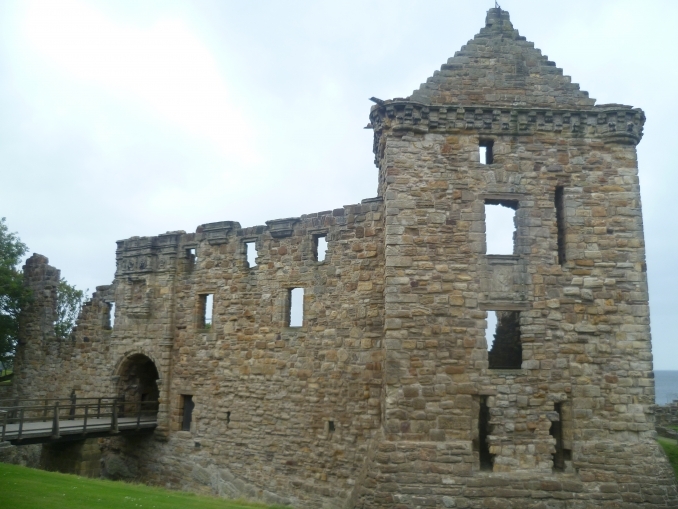St Andrews Castle

The ruins of St Andrews Castle stands on a headland to the north of the town of St Andrews (Scottish Gaelic: Cill Rìmhinn) on the east coast of Fife. The castle dates from around 1200 AD and the ruins seen today are mainly from the mid sixteenth century. It was the main residence of the bishops of St Andrews in the middle ages. It was the scene of the most important events of the Scottish Reformation in 1560.
It has witnessed murders, executions and sieges over its turbulent history. These include the murder of Cardinal Beaton, born in 1494 and assassinated on May 29, 1546. He was the last Scottish Cardinal prior to the reformation and Papal legate in Scotland (representative of the Pope). It was said that his mutilated corpse was hung from one of the castle windows. The Cardinal’s end was met just weeks after he had instigated the trial which saw the execution by burning of the Protestant reforming preacher George Wishart on the 1 March 1546.
The castle has seen conflict during the Wars of Scottish Independence during the late 13th and early 14th centuries, a series of military campaigns fought between Scotland and England. Important battles for Scotland which in the end saw then retain independent status. After the killing of Cardinal Beaton the castle also had to withstand a siege 1546-7. St Andrews Castle was badly damaged in the siege and occupation during the period known as ‘The Rough Wooing’ (1543-1550). This was part of a conflict between Scotland and England as Henry VIII of England attempted to force the marriage of his son Edward and the infant Mary, Queen of Scots. This attempt to force a marriage failed.
So St Andrews Castle has a history of battles, deadly plots, murders and executions. If the walls of this castle could speak they would reveal many fowl deeds and some brave ones. It played an important part in Scotland’s history and we would recommend a visit. St Andrews is located north of the A917 and has many interesting buildings and places to see. The whole area is steeped in history and inhabited since Mesolithic times (middle stone age). King Oengus I, the Pictish King of the mid-eighth century established a monestary in the area where it is thought relics of St Andrew (patron saint of Scotland) were brought. Details for the opening times of St Andrews Castle can be obtained from the Historic Scotland website.
Celtic nation:
- Scotland
Itinerary:
- Scotland Fife
Place type:
- Castle



















